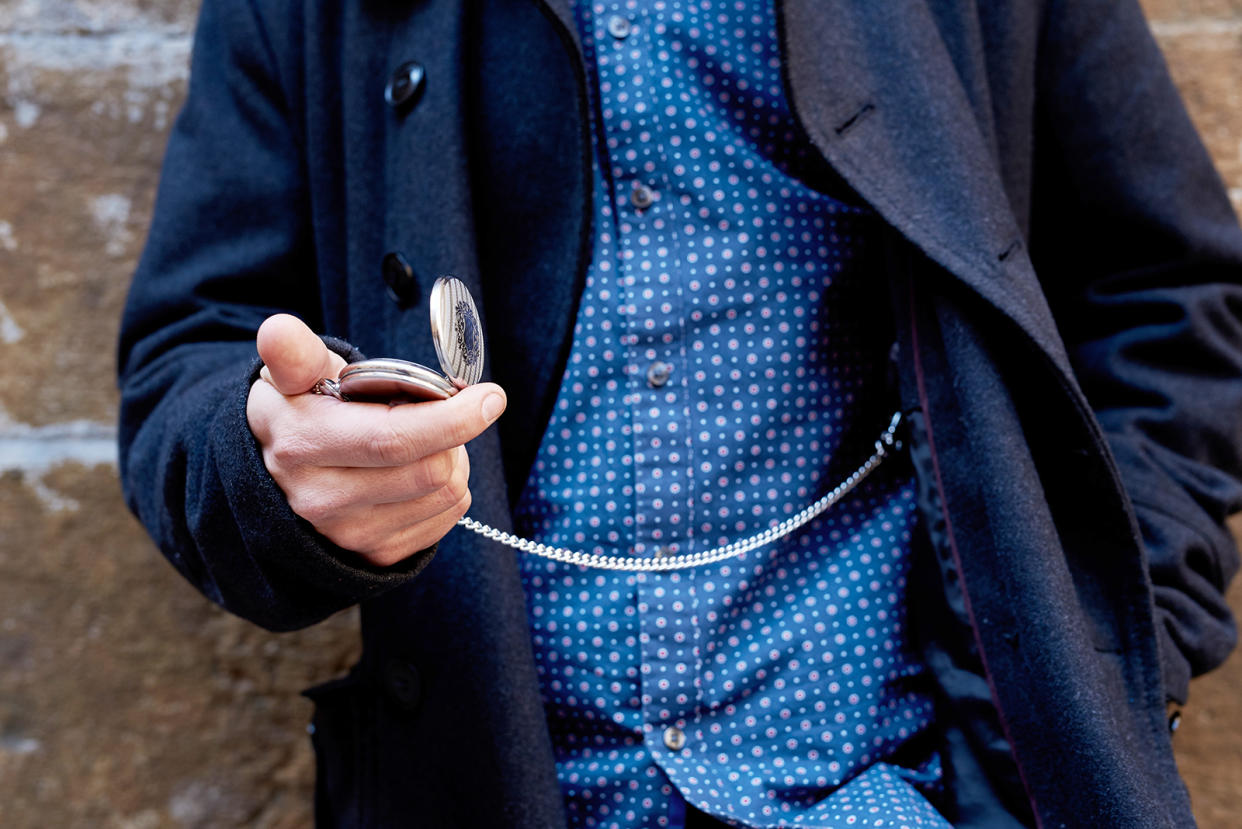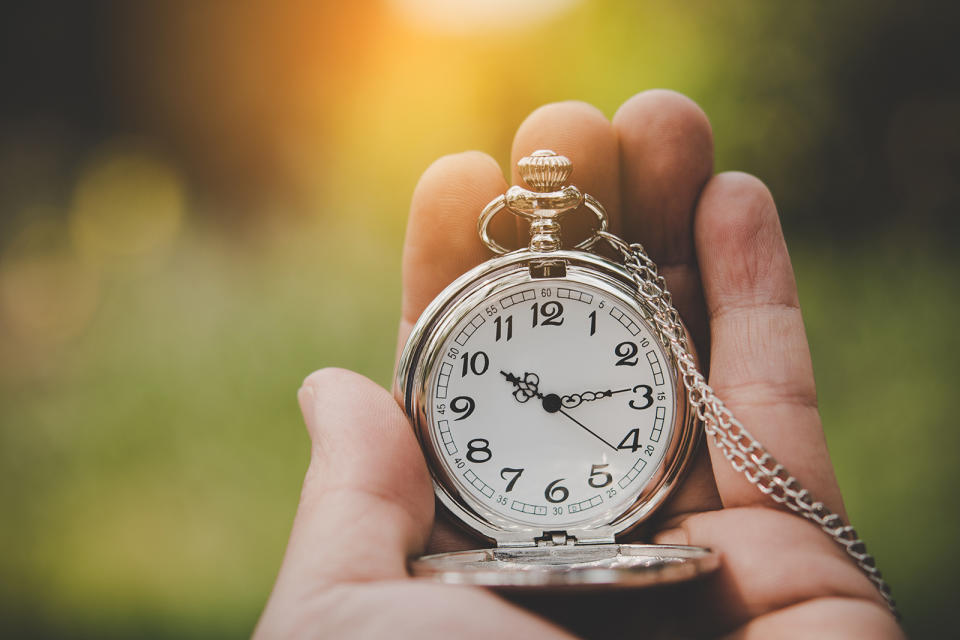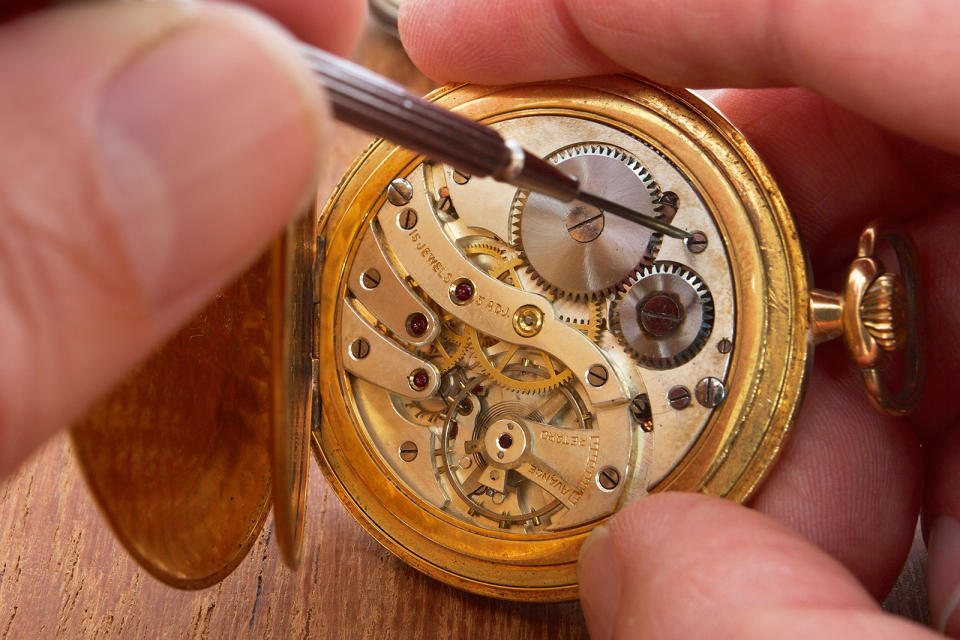Antique Pocket Watch Identification and Valuation Guide

Like wedding rings and china sets, antique pocket watches often become precious family heirlooms passed down from parent to child for generations. They never lose their charm no matter how beaten and battered they are by the ravages of time. Knowing how to conduct your own antique pocket watch valuation at home helps make sure you’re giving it the proper care it needs. After all, you probably don’t want to give your 16-year-old kid an old pocket watch worth $100,000 as a birthday present.
Instead, figure out how to determine pocket watch values and brands to keep an eye out for with our helpful guide.
6 Antique Pocket Watch Valuation Tips

From the brands that turn heads at auction to the industry jargon you'll see in online descriptions, these are some of the best tips to help you roughly value your pocket watch without any expertise.
1. Expensive Pocket Watches Are the Exception, Not the Rule
We're sorry to break it to you but most old pocket watches are worth less than $200, especially if they're in rough shape and don't work.
Most Valuable Antique Pocket Watches | Record Sales Prices |
|---|---|
1932 Patek Philippe & Co. Perpetual Calendar Pocket Watch | $24 million |
1948 Patek Philippe & Co. 18K Gold & Enamel Pocket Watch | $12.5 million |
1900 Patek Philippe & Co. 18K Gold Pocket Watch | $2.25 million |
The most expensive pocket watch ever sold went for $24 million in a Sotheby's auction. A Patek Philippe watch circa 1930, it was made by one of the most consistently valuable luxury horologist brands. Naturally, it went for a record-breaking amount of money.
Recently, another Patek Philippe (this time a timepiece with exquisite enamel from 1948) came to auction at Sotheby's rival, Christie's, and sold for $12.5 million. In another Christie's auction in 2013, an 18K gold Patek Philippe pocket watch from 1900 sold for $2,251,750.
Unfortunately, these pieces' prices are by-and-large outliers. So, while there is a small chance your grandpa's pocket watch is worth six or seven figures, the odds are stacked against you.
Before the most valuable antique pocket watch entered a Sotheby's auction, it road-tripped to the beloved PBS program Antiques Roadshow. It was evaluated to be worth $250,000 — a far cry from what it would eventually go for.
2. Know Your Pocket Watch Brands
As with many antiques, pocket watches with manufacturers known for their quality work will be more valuable as the demand is higher. Swiss-made watches are some of the most popular and valuable.
Some of the most common brands you may encounter include:
Arnex
Colibri
Elbel
Elgin
Hamilton
Longines
West Clock
Waltham
Keep in mind that knowing your pocket watch's brand is only useful when you know how much those brands are worth. Brands can range wildly in value. Fine Elgin and Waltham pocket watches regularly sell for a few thousand dollars, while much cheaper Colibri pocket watches go for only about $200 on average.
The first American pocket watch wasn't made until 1809 by the American Watch Company in Waltham, Massachusetts, which later became known as the Waltham Watch Company.
3. Check the Condition
If the watch works properly, it's going to be worth more than one that doesn't. Check to see if its movements are still operational by holding it up to your ear and listening for a rhythmic "ting, ting, ting" sound.
Related: Best Ways to Sell Old Jewelry & Turn Your Heirlooms Into Cash
4. Identify Its Jewel Count
The jewels in the watch mechanism are tiny manmade rubies that have no inherent value but help reduce friction. A general rule of thumb is the more jewels you count, the more valuable the watch is.
5. Assess the Movement Materials
Higher quality pocket watches include finer details like embellished plates, gold jewel settings, and diamond end-stones. These features are all valuable on their own, and in conjunction can really increase an antique pocket watch's value substantially.
The weight of a pocket watch may indicate that it has a sophisticated movement or a case of solid gold. Any heavy pocket watch is worth a thorough investigation.
6. See if the Watch Case Is Made Out of Valuable Materials
Just as with gemstones and embellishments, the more valuable the raw materials used to make the pocket watch, the more it's going to be worth overall. For example, stainless steel has a very low value because it's so affordable and common to manufacture. Meanwhile, solid gold cases are worth substantially more because of the raw value of gold.
A gold case marked 14K, 18K, or 750 with the stamp on the inside back cover of the watch is more valuable than unmarked watches. However, if you can't find the stamp it's likely not gold and not worth that much.
3 Ways to Identify an Antique Pocket Watch at Home

Antique pocket watch identification includes knowing how to figure out what type of watch you have and who made it. Before you can figure out how much it's worth, you have to know what exactly you've got in your hands.
1. Find the Serial Number
There are several different identification marks you may find on an antique pocket watch. American-made pocket watches may have a serial number on the watch case. Or you may find one on the movement. These marks are usually different because cases and movements were typically made by separate manufacturers.
Carefully open the back cover of the pocket watch to find the serial number engraved into the movement. You can then search the Pocket Watch Database or the tables provided by PM Time Service to help you identify which piece you have.
Related: 4 Tips to Help You Identify Old Waltham Watches
2. Determine Which Pocket Watch Style You Have
At first glance, all pocket watches look the same. However, there are so many different nuances to look for. Some antique pocket watch styles — like hunter cases — do better at auction than others.
Demi-hunter case: The cover has a tiny window so you can tell the time without opening it. This is mostly a European style.
Hunter case: This type of watch has a round metal cover attached to a spring hinge that closes to protect the crystal on the dial. The stem and crown, or winding mechanism, will be located at the 3 position on the watch.
Military pocket watches: Pocket watches were standard issue for militaries in some regions up through the early 1900s and were very simple.
Open-face: This type of watch doesn't have a cover to protect the crystal, or glass, on the dial of the watch. The winding and setting stem and crown will be located at the 12 position on the watch.
Pair-cased: Made in the mid-18th century, this is essentially an open-face pocket watch set inside a hunter case. The inner case can be removed to wind the watch and then placed in the outer case for protection.
Railroad pocket watch: Railroad watches were made for and used by people working on the railroad. Any made after 1908 are typically open-faced.
Stainless steel watches: These are pocket watches with a case made from stainless steel.
Wristwatch conversion: This is a wristwatch that was converted into a pocket watch.
3. Ascertain the Movement Type
The mechanisms that make a pocket watch work are collectively known as movements. There are different movements, and each one winds and sets the watch in a different way.
Key-wind, key-set: You need a special type of key to wind and set the watch. This was the standard from the 1600s through the mid-1800s.
Stem-wind, stem-set: Commercialized in the 1850s, this type eliminates the need for a key and uses a stem to wind and set the watch.
Stem-wind, lever-set: You set this type of watch by opening the dial cover to access the special setting lever. This is common for railroad watches in the 1900s.
Stem-wind, pin-set: With this modern movement, you press the pin, then turn it to set the time before releasing the pin.
Jeweled: High-end watches throughout history tended to use this movement type where small minerals are used to reduce friction.
It's Never Too Late to Find Out Your Pocket Watch's Value
Antique pocket watches might not be the money makers that you'd hope they would, but they make great collector's pieces and family heirlooms. Monetary value isn't the only kind of value there is, after all.

